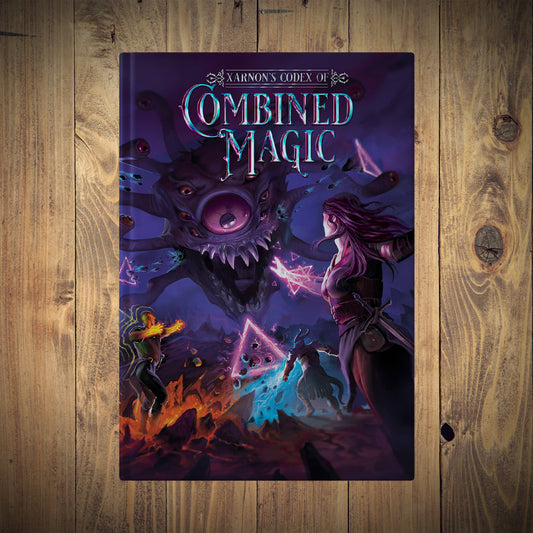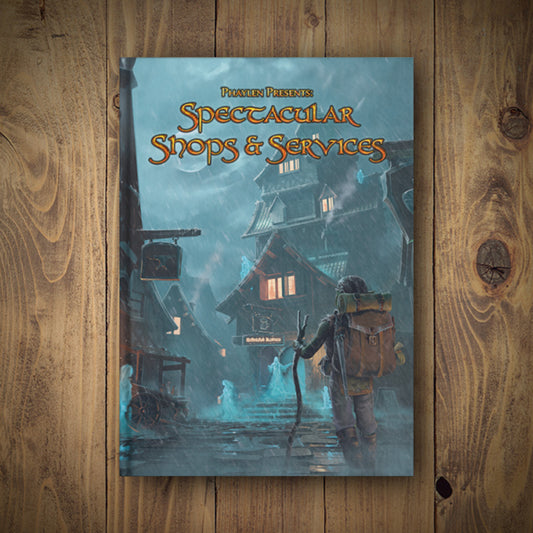
Change Your 5E Monsters Based on the Environment
Share
We all know you can just grab a monster from the 5E Monster Manual that fits the environment. But another approach I like to use is adapting a creature to the environment the party is in. This not only adds realism but also creates unique challenges for your players. In this first post of a series, we’ll look at how to adjust monsters for low-light or dark environments, giving you ideas to make encounters more interesting and immersive. Stay tuned for more ideas on how to modify creatures for different settings.
Sensory Adaptations:
Enhanced Hearing:
- Description: Large ears or highly sensitive auditory systems.
- Function: Allows creatures to detect prey, predators, or mates in the dark.
Echolocation:
- Description: Ability to emit sound waves and interpret the echoes that bounce back.
- Function: Enables precise navigation and hunting in total darkness.
Enhanced Olfactory and Tactile Senses:
- Description: Highly developed sense of smell or touch, with features like whiskers or sensitive skin.
- Function: Helps locate food, avoid danger, and communicate in the absence of light.
Bioluminescence:
- Description: Ability to produce light through chemical reactions within the body.
- Function: Used to attract prey, communicate, or deter predators.
Physical Adaptations:
Loss of Pigmentation:
- Description: Lack of skin color due to the absence of light, leading to an albino appearance.
- Function: Energy conservation by not producing pigments.
Reduction or Loss of Eyes:
- Description: Small or vestigial eyes that might be non-functional.
- Function: Conserves energy and resources that would otherwise go into maintaining vision.
Slender or Elongated Bodies:
- Description: Long, slender bodies to navigate through narrow spaces.
- Function: Facilitates movement in tight, confined environments like cave systems.
Claws or Suckers:
- Description: Specialized limbs for gripping or climbing smooth, wet surfaces.
- Function: Enhances mobility and stability in moist environments.

Image of a goblin that has physically adapted for underground - Image Generated by Chat GPT
Behavioral Adaptations:
Torpor or Hibernation:
- Description: Ability to enter a state of low metabolic activity during scarce food periods.
- Function: Conserves energy when resources are limited.
Nest Building:
- Description: Constructing nests or burrows to maintain a stable microclimate.
- Function: Provides protection from predators and harsh environmental conditions.
Dietary Adaptations:
Detritivores:
- Description: Diet consists of decaying organic matter.
- Function: Utilizes abundant decomposing material found in moist environments.
Carnivorous or Scavenger Behaviors:
- Description: Predation on other cave dwellers or scavenging carcasses.
- Function: Takes advantage of the available food sources in a niche environment.
Reproductive Adaptations:
Extended Parental Care:
- Description: Longer periods of caring for offspring until they are capable of surviving independently.
- Function: Increases offspring survival rates in challenging environments.
Egg Protection:
- Description: Laying eggs in moist, protected areas with minimal light exposure.
- Function: Ensures the eggs remain hydrated and safe from predators.
Environmental Interaction:
- Moisture Dependence: Creatures will often need to stay in environments with high humidity to prevent desiccation.
- Stable Temperatures: Cool and moist environments provide stable temperatures, reducing the need for extensive thermoregulation.
- Resource Scarcity: Adaptations to efficiently use limited food sources are crucial for survival.
By incorporating these adaptations, you can create a diverse and intriguing array of creatures that are perfectly suited to thrive in cool and moist environments, providing unique and immersive challenges for your players.
Marc




